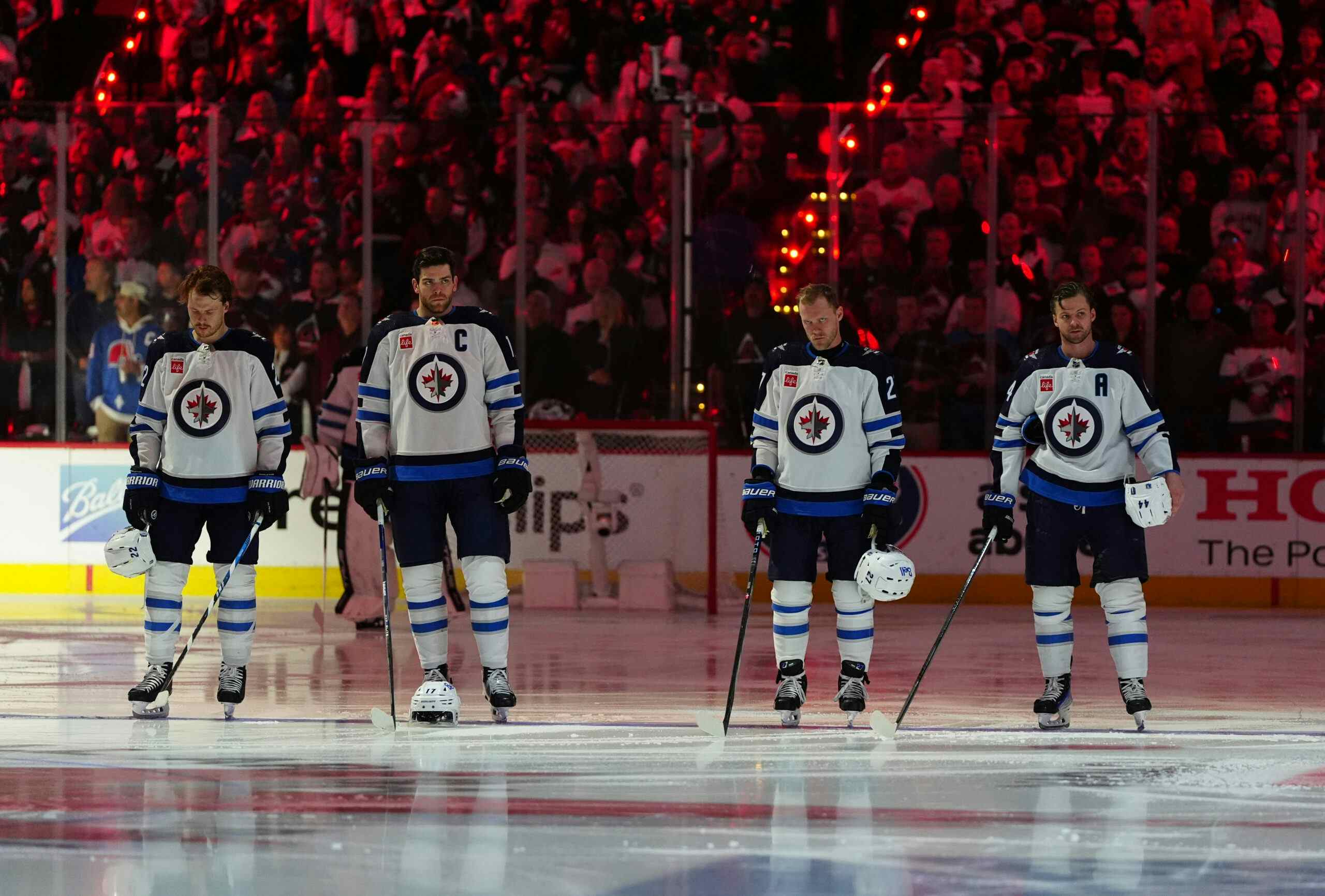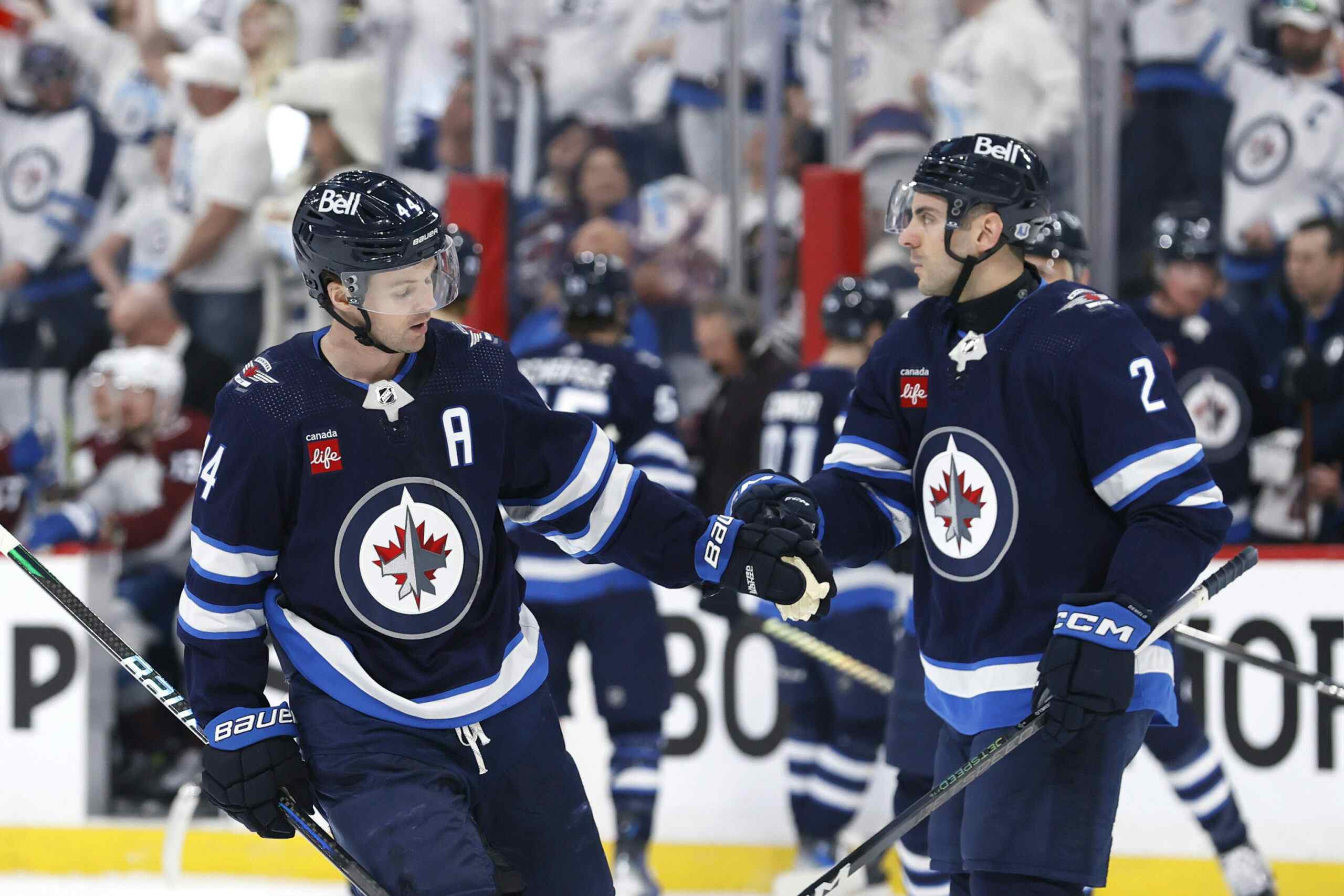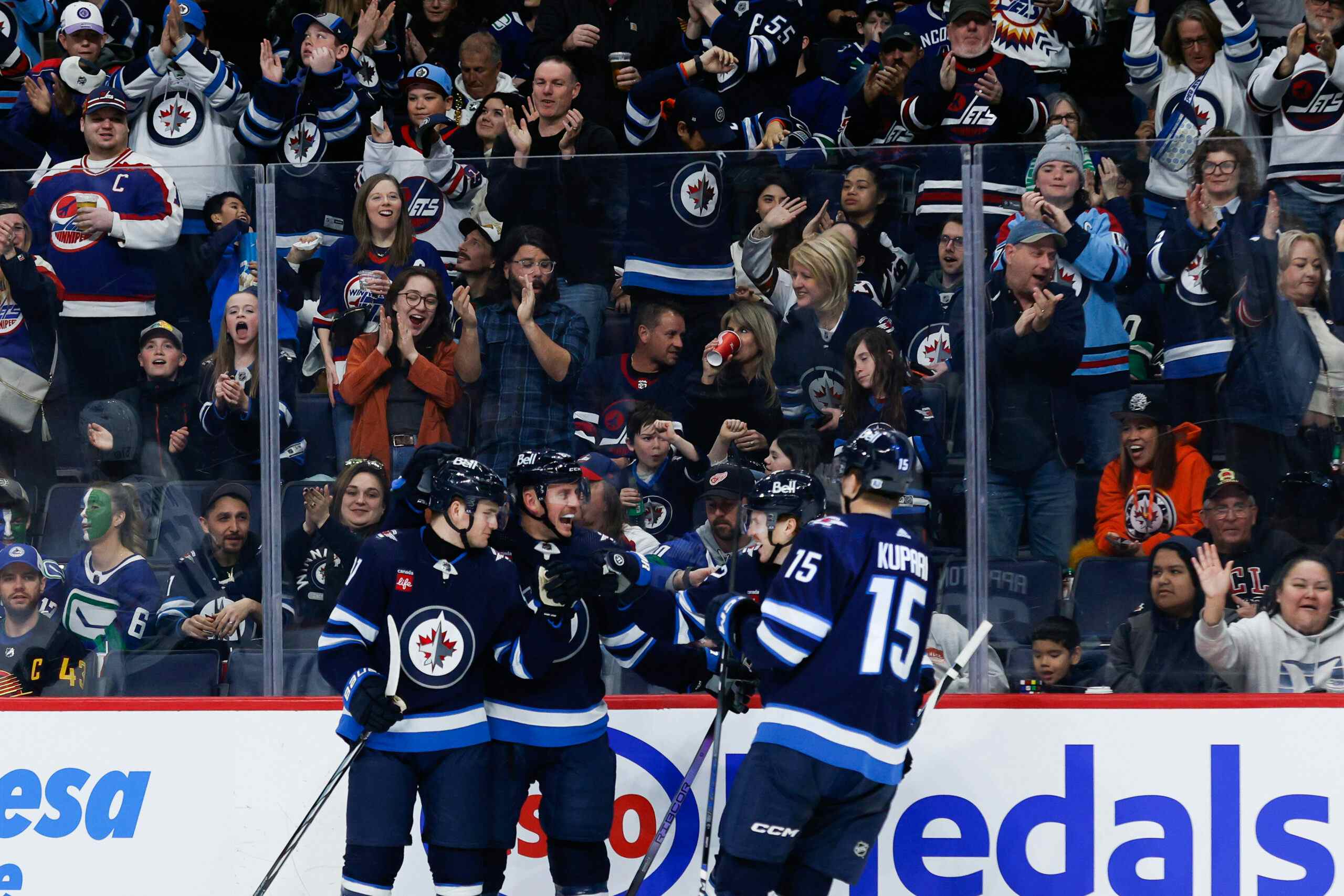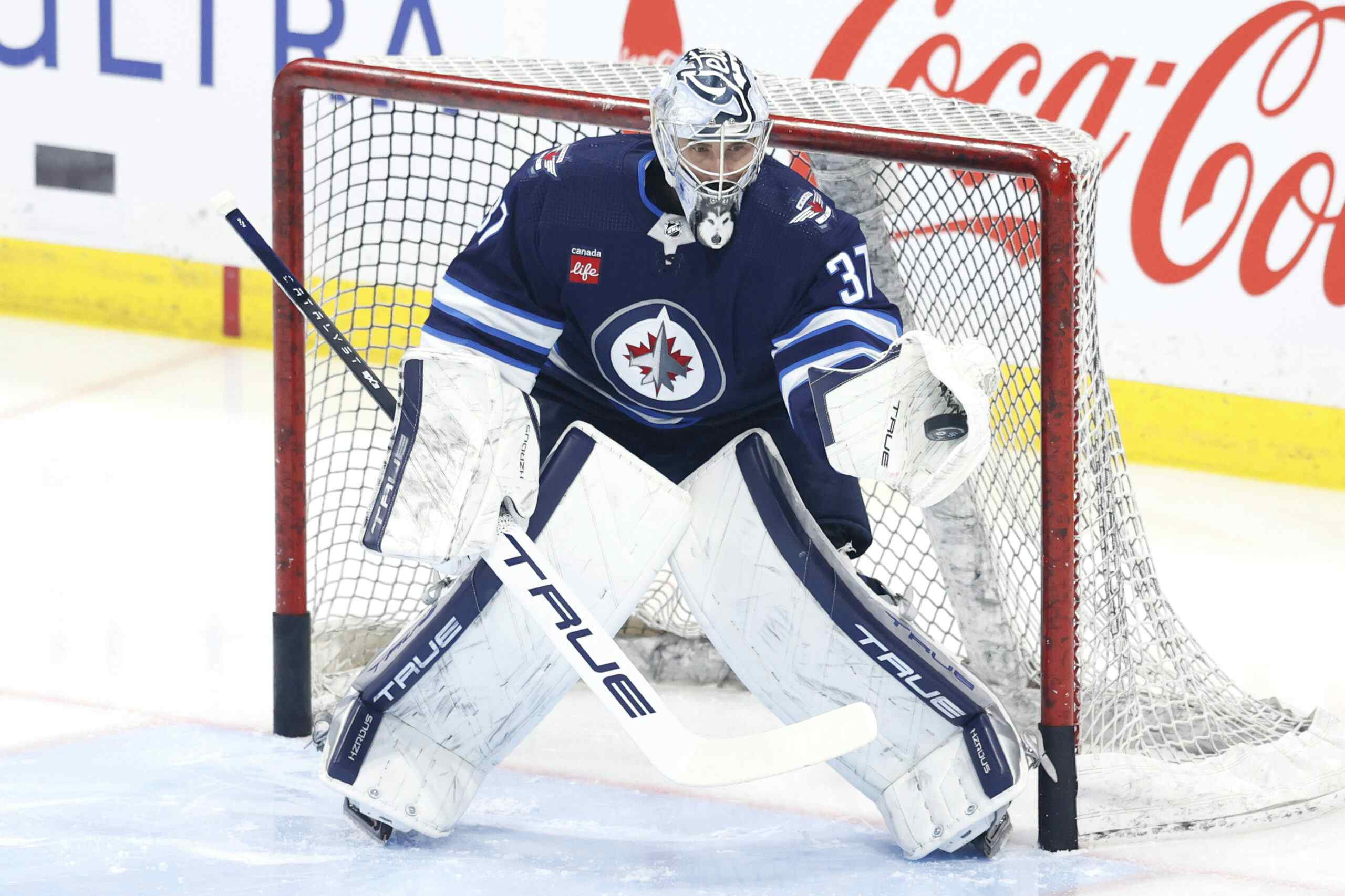Why Logan Stanley could be a good player
By Garret Hohl
7 years agoYes, the Winnipeg Jets’ 18th overall selection in the 2016 NHL Entry draft is a low scorer. Yes, low-scorers tend to succeed less often than high-scorers selected in the same range.
However, not all have failed and probability is not destiny. There could be more to Stanley which could make him a success.
Prior to the draft, I wrote two different articles on scouting tendencies, using Logan Stanley as an example.
The base of this theory and the evidence used was that from previous study done by Rhys Jessop on his own website (here is a link to the third of a three part series). Jessop showed that scoring mattered for draft selections.
I took this same data one step further by placing it into a graph, which I want to discuss again:

The graph splits CHL drafted defenders over 10 years. They are split by pick selection, with Top being picks 1-25, Mid being picks 26-50, and Low being picks 51+. Each pick group is then split into those who score over 0.6 points per game and those that score under.
The 0.6 point per game line is slightly arbitrary. Scoring efficiency is not black and white, one or zero, but a continuous variable. It is a fairly high threshold, signifying you are one of the top 20-30 scorers in your league.
The results from that line, however, demonstrates a market inefficiency in scouting and the graph is really quite powerful.
That “Top picks” succeed more than “Mid picks” and “Low picks” demonstrates that scouts have the ability to detect which players that are more likely to succeed to some extent. The fact that “Top non-scorers” succeed more often than “Low scorers” shows that scouts detect factors that lead to success outside of scoring.
The graph also shows that scouts overvalue these non-scoring factors on average. The average “Top non-scorer” succeeds just as often as a “Mid scorer”. Put simply: a “non-scorer” selected in the middle of the draft (or even the first round) is more similar to a player drafted later on who does score than that “non-scorer” is to a player drafted in roughly the same range on draft day who does score.
However, analysis should never stop there with the basic trends.
What separates a successful scorer and a non-successful scorer? What separates a successful non-scorer from a successful scorer?
Who are the successes that didn’t make the scoring cutoff?
This is what matters most to the Jets and Stanley. What similarities does Stanley have to the players who made it? How similar is he to the players who did not? How did the players who “did not score” (by our arbitrary definition) in the past score in the future?
Here is a short profile on each of the 12 NHL players from the 105 players that were “Top” or “Mid” drafted “non-scorers” in the sample.
Luke Schenn
A 6’2 right shot defender drafted 5th overall out of the WHL. He put up a 0.20 point per game pace in his draft season. Schenn was the only player to go straight into the NHL the next year, where he put up 17 points, followed by two seasons of 22 points. He has since yet to score more than 15 in the NHL.
Dion Phaneuf
Phaneuf is a 6’3 left shot defender who was drafted 9th overall out of the WHL. He put up 0.42 points per game in his draft season, and accelerated to a 0.69 and 1.02 point per game pace over his next two seasons. Phaneuf has struggled to be a consistent top pair calibre defender, but has seemed to settle in better as a second pair guy, while putting up a 0.53 point per game pace in the NHL over his career thus far.
Marc-Edouard Vlasic
Vlasic is an interesting case as he is the first player on the list who would be considered by both the traditional and anlaytical circles as an exceptional defensive defenseman in the NHL. The left shot defender stands at 6’1, and was drafted 35th overall. He only put up a 0.43 pace in his draft season, but jumped up to a 1.11 point per game pace the following year.
Shea Weber
Weber is the favourite example for low scoring big defenders who have done well. He was 6’4 and even scouts didn’t place him as a first round talent, as he was drafted 49th overall. Weber scored at a 0.26 point per game pace in his first-time draft eligible campaign, but did improve to 0.53 and 0.75 points per game in subsequent seasons. The right-shot defender even put up 27 points in 46 games in his rookie AHL season. While he was not a scorer in his draft year, Weber is one of the top scoring defenseman in the NHL now with 166 goals in 763 games in the NHL.
Braydon Coburn
Coburn is another defender known more for his defensive game and size with his 6’5 frame. He is a left-shot defenseman and was drafted 8th overall. He put up 0.36 points in his draft season, and then followed it up with 0.55 and 0.73 the next two years. He hasn’t put up many points in the NHL relative to his ice time, but he is still a credible NHL-level defender.
Tyler Myers
Myers is the only defender on the list taller than Stanley, with a measured frame of 6’8. The smooth skating blue liner, now a member of the Jets, did not score much in his draft season, with only a 0.29 point per game pace. It is interesting to point out though that many scouting notes talked about the 12th overall pick having the skills for a productive game. His scoring jumped up substantially the next season to a 0.72 points per game, and he put up 48 points in the NHL the next year.
Jeff Schultz
Schultz stands at 6’6 and shoots left. He was drafted 27th overall after putting up 0.49 points per game. There may have been some inflation in his draft numbers, as he only put up 0.40 and 0.59 points per game over the next two seasons. Schultz has not been a scorer in the NHL, with only a 0.19 point per game pace.
Marc Staal
The second oldest of the Staal brothers, and arguably the least effective of the three in the NHL. Staal has size at 6’4 and was drafted 12th overall after putting up 0.40 points per game in the OHL. His next season he more than doubled that production, with 0.86 points per game. The defense-first blue liner now has 617 NHL games to his name, although he’s generally had a notable negative impact on shot differentials.
Kristopher Letang
No one would think of Letang as a “non-scoring” defender. He did, however, fall below the 0.60 point per game line in his draft season, only putting up 0.46 points per game. He paced 1.13 and 1.30 the next two seasons in the QMJHL. It’s obvious to see that the 6 foot, right-hand shot, defender had a down year in his draft season and was a legitimate offensive threat.
Travis Hamonic
Hamonic, like Vlasic and Coburn, is one of the few defenders known more for their defensive game in both junior and the NHL, while also actually having a positive impact on shot differentials. Hamonic was drafted 53rd overall from the WHL after 0.36 point per game season. The 6’2 defender improved the next two seasons to a 0.70 and 1.07 point per game pace.
Mark Fistric
Fistric is a 6’2, left-shot defender drafted 28th overall who retired just last summer after a 325 game career. Fistric put up 0.17 points per game in his draft season. The next year was cut short due to injury, and he only scored 6 points in 15 games. The next year Fistric put up a 0.48 point per game pace. Though he was useful on the penalty kill, Fistric struggled to be an NHL regular throughout his career.
Kurtis Foster
Foster has size with his 6’5 frame, and was a right-handed shot. The defender put up 0.35 points per game in his draft season, and than 0.66 points the next year. He started the next season in the OHL but finished the year putting up 15 points in 39 games in the AHL. Foster played 405 games, and currently plays in the DEL.
Trends in the Survey

For one, off the bat, it’s noticeable that a good chunk of the players below the 0.6 point per game scoring line score more than a 0.6 point per game pace later. Most score above that pace in their second season. Schultz, Weber, and Coburn all score essentially at or above that pace in their third season. Fistric is the only individual that misses all three seasons (excluding Schenn as he went to the NHL right after his draft season).
Another trend is that most of the players are from the WHL. Vlasic and Letang played in the QMJHL, while Foster and Staal played in the OHL. The rest were WHL defenders. An anecdotally related fact, the WHL is also the league that last year tended to distribute their defenders’ icetime similarly most similarly to their scoring efficiency. Could that have an impact on the observed results?
All the players, with the exception of Letang and Vlasic, have size while ranging from 6’2 to 6’8. They are mostly known for their defensive game. Then again, the same is said of most of the “non-scoring” misses, like the examples Jessop provides with Branislav Mezei, Boris Valabik, Matthew Spiller, Ryan Parent, Matt Pelech, Libor Usturnl, Andy Rogers, and Logan Stephenson.
If you are a low-scoring defenseman and you want to be drafted early, you need size and you need to play a solid defensive game. But, if you want to make it into the NHL in the future, and especially if you want to be an impact player, you want to eventually develop into a defenseman capable of producing offense.
The last thing we should point out is that Stanley scored less than most of these players did. Sure, Myers and Weber had similar production (when not adjusting for era or league differences), but Myers and Weber seem to be more one-of-a-kind type players. Looking for the next Myers is like looking for the next Zdeno Chara or Dustin Byfuglien; they’re rare specimens for a reason.
Addendum: I forgot to mention that any bias that extends through hockey operations will impact both where players are drafted and how much opportunity they are given to succeed. A late drafted defender who scores has already been shown to be thought of less by “hockey people” due to non-scoring factors. This study does not tell you whether or not these evaluations are vindicated.
Final Thoughts
Negativity aside, Stanley is not doomed to a middling career. There are those that have walked the same path as he is walking now and have succeeded. The path is steep, and few make it, but some do.
Stanley has some intriguing skills. One can see why the Jets expect him to be better than his scoring numbers and why they hope he can develop more of an overall, well-rounded game.
All that is left is to see whether or not he can put things together and take the next steps in his development. It will take hard work and determination, something some scouts believe he has.
The Jets traded a late first and an early second to move up for Stanley. It all rests on Stanley’s shoulders now.
MORE ON LOGAN STANLEY
Recent articles from Garret Hohl





